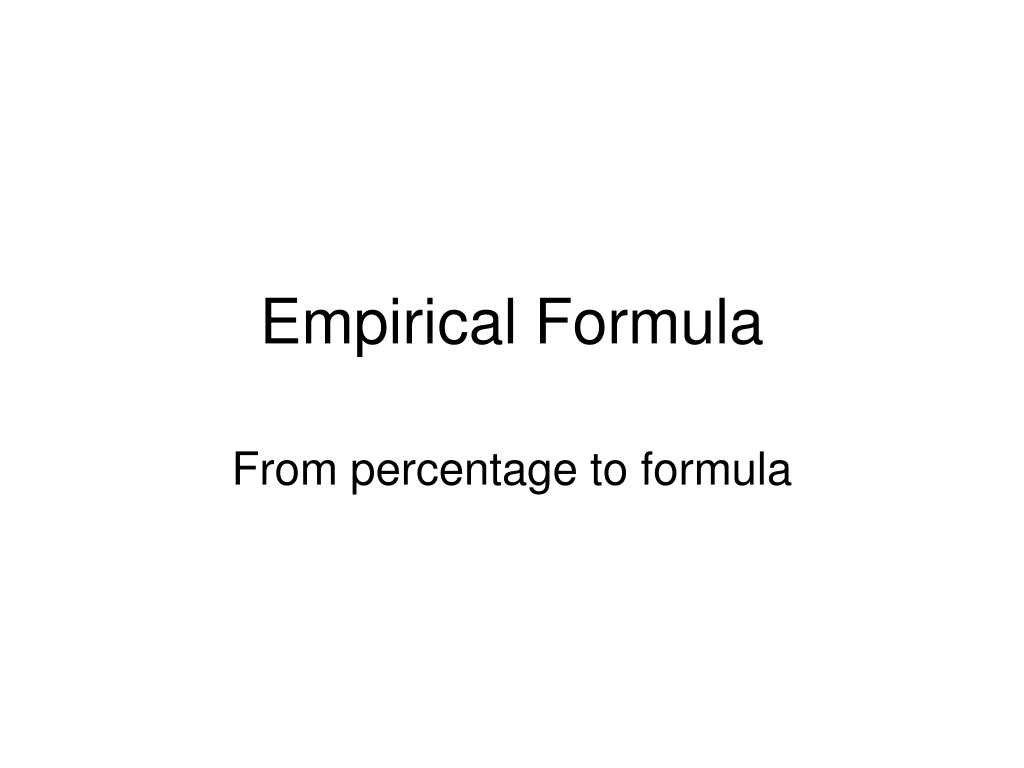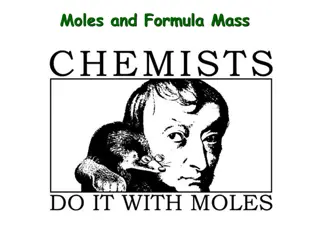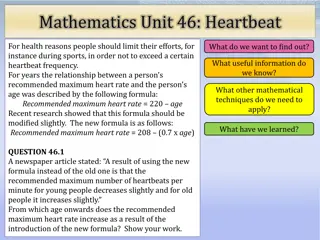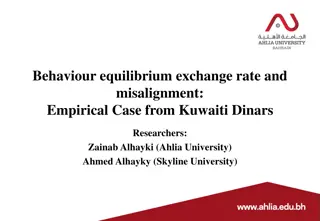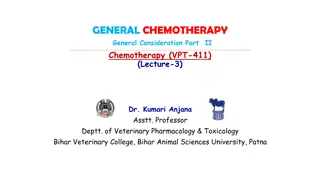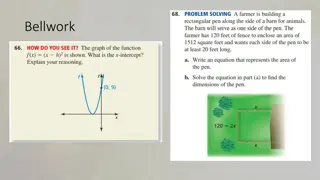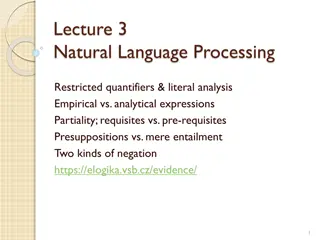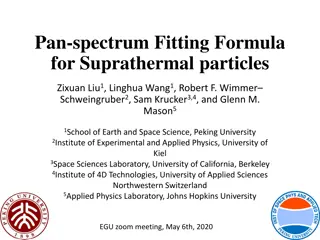Empirical Formula
How to determine empirical formulas from percentage compositions involves converting percentages to grams, then to moles, and finding the lowest whole number ratio of elements to derive the empirical formula. This process is exemplified with step-by-step calculations for compound compositions containing carbon, hydrogen, nitrogen, phosphorus, and oxygen.
Download Presentation

Please find below an Image/Link to download the presentation.
The content on the website is provided AS IS for your information and personal use only. It may not be sold, licensed, or shared on other websites without obtaining consent from the author.If you encounter any issues during the download, it is possible that the publisher has removed the file from their server.
You are allowed to download the files provided on this website for personal or commercial use, subject to the condition that they are used lawfully. All files are the property of their respective owners.
The content on the website is provided AS IS for your information and personal use only. It may not be sold, licensed, or shared on other websites without obtaining consent from the author.
E N D
Presentation Transcript
Empirical Formula From percentage to formula
The Empirical Formula The lowest whole number ratio of elements in a compound. The molecular formula the actual ratio of elements in a compound The two can be the same. CH2empirical formula C2H4molecular formula C3H6molecular formula H2O both
Calculating Empirical Just find the lowest whole number ratio C6H12O6 CH4N It is not just the ratio of atoms, it is also the ratio of moles of atoms In 1 mole of CO2there is 1 mole of carbon and 2 moles of oxygen In one molecule of CO2there is 1 atom of C and 2 atoms of O
Calculating Empirical Pretend that you have a 100 gram sample of the compound. That is, change the % to grams. Convert the grams to mols for each element. Write the number of mols as a subscript in a chemical formula. Divide each number by the least number. Multiply the result to get rid of any fractions.
Example Calculate the empirical formula of a compound composed of 38.67 % C, 16.22 % H, and 45.11 %N. Assume 100 g so 38.67 g C x 1mol C = 3.220 mole C 12.01 gC 16.22 g H x 1mol H = 16.09 mole H 1.01 gH 45.11 g N x 1mol N = 3.219 mole N 14.01 gN
3.220 mole C 16.09 mole H 3.219 mole N C3.22H16.09N3.219 If we divide all of these by the smallest one It will give us the empirical formula
Example The ratio is 3.220 mol C = 1 mol C 3.219 molN 1 mol N The ratio is 16.09 mol H = 5 mol H 3.219 molN 1 mol N C1H5N1 is the empirical formula A compound is 43.64 % P and 56.36 % O. What is the empirical formula?
43.6 g P x 1mol P = 1.4 mole P 30.97 gP 56.36 g O x 1mol O = 3.5 mole O 16 gO P1.4O3.5
Divide both by the lowest one P1.4O3.5 The ratio is 3.52 mol O = 2.5 mol O 1.42 mol P 1 mol P P1O2.5
Multiply the result to get rid of any fractions. P1O2.5 = P2O5 2 X
Caffeine is 49.48% C, 5.15% H, 28.87% N and 16.49% O. What is its empirical formula?
1 mol 12 We divide by lowest (1mol O) and ratio doesn t change = 4.1mol 49.48 C g 1 mol 1 5.15 H = 5.2mol g 1 mol 14 Since they are close to whole numbers we will use this formula 28.87 N = 2.2mol g 1 mol 16 = 1.0mol 16.49 O g
C4.12H5.15N2.1O1 OR C4H5N2O1 empirical mass = 97g
Empirical to molecular Since the empirical formula is the lowest ratio the actual molecule would weigh more. By a whole number multiple. Divide the actual molar mass by the mass of one mole of the empirical formula. Caffeine has a molar mass of 194 g. what is its molecular formula?
molar mass x = Find x if empirical formula mass 194 g 97 g = 2 C4H5N2O1 2 X C8H10N4O2.
Example A compound is known to be composed of 71.65 % Cl, 24.27% C and 4.07% H. Its molar mass is known (from gas density) is known to be 98.96 g. What is its molecular formula?
Example 1 mol 5 . 35 71.65 Cl = 2.0mol g 1 mol 12 24.27C = 2.0mol g 1 mol 1 4.07 H. = 4.0mol g
Cl2C2H4 We divide by lowest (2mol ) Cl1C1H2 would give an empirical wt of 48.5g/mol Its molar mass is known (from gas density) is known to be 98.96 g. What is its molecular formula?
would give an empirical wt of 48.5g/mol Its molar mass is known (from gas density) is known to be 98.96 g. What is its molecular formula? 98 . 96 g molar mass = 2 x = = empirical formula mass 48 5 . g
2 X Cl1C1H2 = Cl2C2H4
This powerpoint was kindly donated to www.worldofteaching.com http://www.worldofteaching.com is home to over a thousand powerpoints submitted by teachers. This is a completely free site and requires no registration. Please visit and I hope it will help in your teaching.
